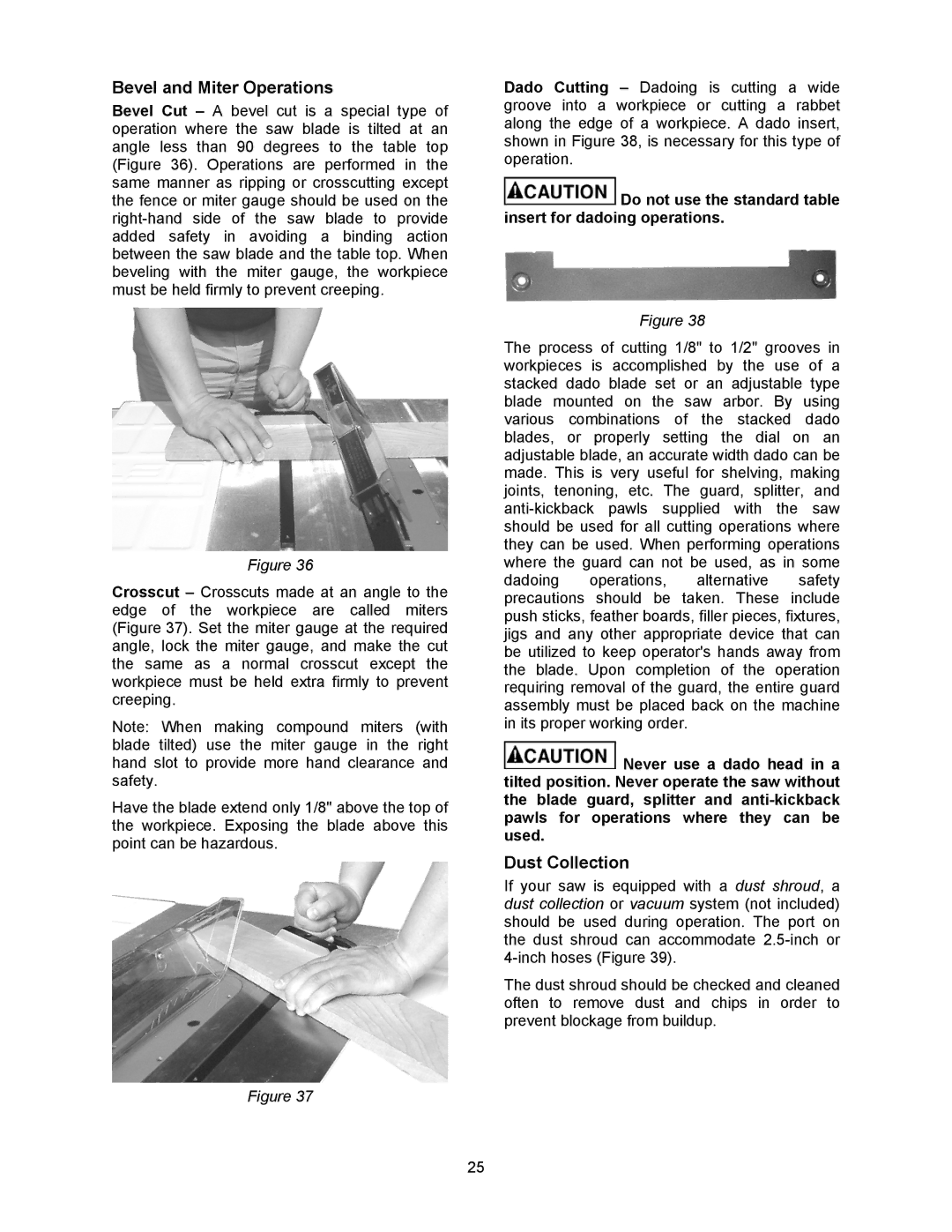
Bevel and Miter Operations
Bevel Cut – A bevel cut is a special type of operation where the saw blade is tilted at an angle less than 90 degrees to the table top (Figure 36). Operations are performed in the same manner as ripping or crosscutting except the fence or miter gauge should be used on the
Figure 36
Crosscut – Crosscuts made at an angle to the edge of the workpiece are called miters (Figure 37). Set the miter gauge at the required angle, lock the miter gauge, and make the cut the same as a normal crosscut except the workpiece must be held extra firmly to prevent creeping.
Note: When making compound miters (with blade tilted) use the miter gauge in the right hand slot to provide more hand clearance and safety.
Have the blade extend only 1/8" above the top of the workpiece. Exposing the blade above this point can be hazardous.
Figure 37
Dado Cutting – Dadoing is cutting a wide groove into a workpiece or cutting a rabbet along the edge of a workpiece. A dado insert, shown in Figure 38, is necessary for this type of operation.
 Do not use the standard table insert for dadoing operations.
Do not use the standard table insert for dadoing operations.
Figure 38
The process of cutting 1/8" to 1/2" grooves in workpieces is accomplished by the use of a stacked dado blade set or an adjustable type blade mounted on the saw arbor. By using various combinations of the stacked dado blades, or properly setting the dial on an adjustable blade, an accurate width dado can be made. This is very useful for shelving, making joints, tenoning, etc. The guard, splitter, and
![]() Never use a dado head in a tilted position. Never operate the saw without the blade guard, splitter and
Never use a dado head in a tilted position. Never operate the saw without the blade guard, splitter and
Dust Collection
If your saw is equipped with a dust shroud, a dust collection or vacuum system (not included) should be used during operation. The port on the dust shroud can accommodate
The dust shroud should be checked and cleaned often to remove dust and chips in order to prevent blockage from buildup.
25
